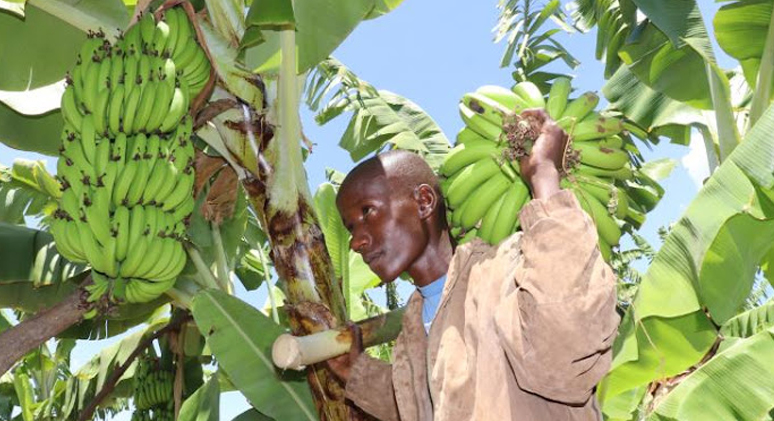SOURCE: Agatha Ngotho, The Star
Farmers in Taita Taveta county have been trained on better agronomy in banana farming.
The move seeks to help farmers increase crop yield, boost food security and improve their income.
Scientists from Centre for Agriculture and Bioscience International (CABI) in Kenya trained the smallholder farmers to help them tackle a range of pests and diseases that attack banana.
They include nematodes, moles, thrips, banana weevils, cigar end rot and panama disease.
More than 50 million people in East Africa depend on highland bananas for their food and income.
However, pests and diseases, nutrient deficiencies and drought stress continue to affect average productivity of bananas.
PlantwisePlus assistant training officer Peter Karanja said there is need for banana and tomato pest management.
Pests can be controlled using bio traps such as the TutaSan pheromone trap, the Delta trap and insect sticky cards used as part of an IPM strategy.
Karanja said tomato is one of the most important vegetables grown in Kenya and plays a critical role in income generation and creation of employment for both rural and urban populations. This is in addition to meeting food nutritional requirements.
However, since it was first reported in Kenya in 2014, the tomato leafminer (phthorimaea absoluta) has become a serious threat to the sustainable production of tomatoes in Kenya. Nearly 98 per cent of tomato farmers have been affected.
“It has become invasive in introduced ranges having escaped the biotic constraints, which keep their populations in check in their regions of origin. Infestation by this pest can cause yield losses of up to 100 per cent,” he said.
Pest Control Products Board’s Coast regional manager Stanley Mruu Nganga emphasised on the safe use of plant protection products.
This includes looking at pesticides and why they are regulated by the government as well as the safe purchase, transport, and storage of pesticides.
He said it is important to read the pesticide label, use personal protective equipment during mixing and spraying as well as the correct dosage. These are key topics in the KS 1758-Horticultural code of practice.
Patrice Ngenga, a KS 1758 trainer from the Fresh Produce Exporters Association of Kenya (FPEAK), pointed out the importance of soil and substrate management, cultivation, soil erosion, soil fumigation and site selection, and the KS1758:2016-Horticulture code of practice.
The KS1758 is a Kenyan horticultural code of practice that is anchored on four pillars of food safety, environmental sustainability, worker health and safety and plant health.
This code applies to procurement of inputs, production and placement of horticultural produce in the market.
Ngenga emphasised on aspects of irrigation and water management, fertiliser usage and sanitation for propagation materials.
According to the Kenya Agricultural and Livestock Research Organisation (KALRO), banana is one of the staple food crops grown in Kenya for home consumption and sale.
Banana is the most important fruit crop in Kenya, occupying 1.7 per cent of the total arable land in the country, and is widely grown in most parts of Kenya for cooking and dessert.
Data shows in 2020, Kenya produced more than 1.8 million metric tonnes of bananas. The production increased in comparison to the previous year, when it was measured at 1.7 million metric tonnes.

